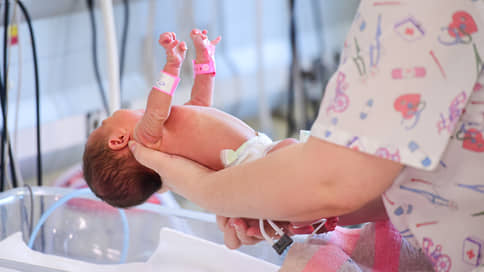Infant mortality in Russia decreased by 20% in six years

Infant mortality in Russia decreased by 20% in six years, the deputy head of the Ministry of Health Yevgeny Kotova said. The department explains the trend, among other things, the active development of perinatal assistance and an increase in the number of obstetric departments in hospitals. To preserve the trend, it is necessary to pay more attention to the preparation of women for bearing the fetus and early diagnosis of various diseases, the expert believes.
Evgeny Kotova, deputy head of the Ministry of Health, told the deputy head of the Ministry of Health on February 28 at the pediatrician Congress on a reduction in infant mortality (the number of deaths during the first year of life. This indicator according to the results of 2024 will not exceed 4 ppm (that is, no more than 4 deaths per thousand born), which, according to the deputy minister, is almost 20% less than in 2019, when the national project “Healthcare” started. In 13 regions, according to her, the infant mortality rate is already less than 3 ppm.
Evgeny Kotova said to achieve this result, in that, thanks to the efforts of specialists engaged in perinatal medicine and the organization of obstetric service.
According to Roszdravnadzor, in 2019–2025, the number of obstetric departments in the hospitals of state hospitals increased by 33% (from 2.19 thousand to 2.9 thousand). 75% of premature births, according to Mrs. Kotova, are today taken in perinatal centers.
Recall that in 2013, the Russian government, on behalf of President Vladimir Putin, launched a program for the additional development of perinatal centers in 32 especially needy regions. In that year, 52.6 billion rubles were allocated for the construction of such centers from the budget of the Federal Fund of Compulsory Medical Insurance.
The infant mortality rate is one of the basic indicators in assessing the level of socio-demographic development of the country. It also includes premature births that have occurred from the 22nd week of pregnancy (those that occur in 37–42 weeks are considered normal) and with a fetal weight of more than 500 grams. Until the mid-1990s, the infant mortality rate in Russia was in the range of 16–20, after 1995 it began to decline smoothly. In 2018, the indicator decreased to 5.1, in 2019-to 4.9, in 2020-up to 4.5 cases per 1 thousand births. According to the results of 2022, infant mortality in Russia was 20% lower than in the United States.
In order for a positive trend to continue, it is necessary that more women need to be proceeded (a variety of examinations and diagnostics before conception, bending and birth), the obstetrician-gynecologist, chief physician of the clinic to medicine Alexei Chernikov believes. The expert notes that it is necessary to eliminate the reasons in advance, which can lead to premature birth and pathological course of pregnancy (including inflammatory processes, deficiency of vitamins and minerals), as well as extend the pregnancy until “possible” deadlines. Alexei Chernikov calls the main causes of the death of infants, congenital developmental abnormalities (for example, malformations of the circulatory system) and intrauterine hypoxia (a state in which the fetus receives not enough oxygen for normal growth and development).
It should be noted that in 2024 the Russian Society of Obstetrician Gynecologists during the conference of the National Medical Chamber claimed About the problem of deficiency of medical specialists helping pregnant women and women in labor. In the Russian Federation, according to the organization, today 3.66 thousand obstetrician-gynecologists and 1.73 thousand neonatologists are not enough, and taking into account the midwives, the personnel deficit is from 8.5 thousand to 11.5 thousand specialists. The deputy head of the Ministry of Health Tatyana Semenova previously reported that in general, the healthcare sector is not enough more than 29.4 thousand doctors of various profiles, including pediatricians.








